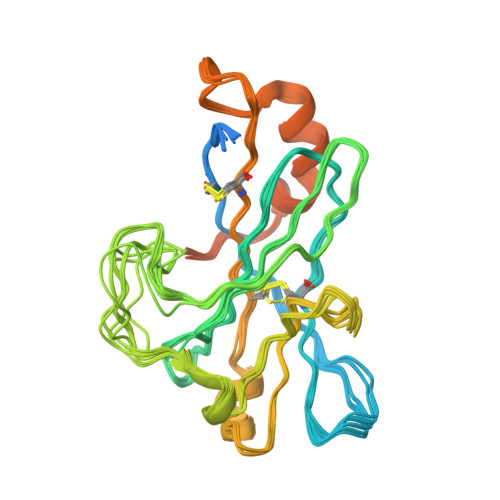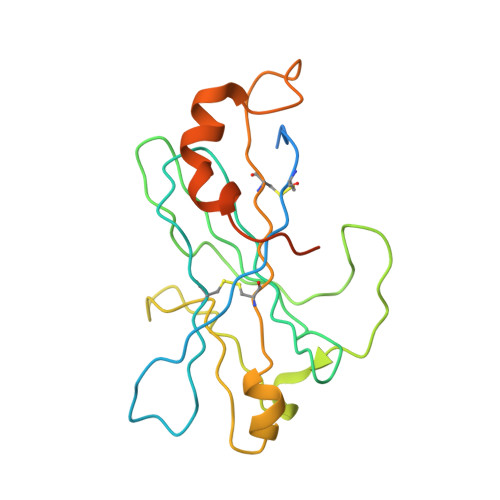The Structure of Mouse Cytomegalovirus m04 Protein Obtained from Sparse NMR Data Reveals a Conserved Fold of the m02-m06 Viral Immune Modulator Family.
Sgourakis, N.G., Natarajan, K., Ying, J., Vogeli, B., Boyd, L.F., Margulies, D.H., Bax, A.(2014) Structure 22: 1263-1273
- PubMed: 25126960
- DOI: https://doi.org/10.1016/j.str.2014.05.018
- Primary Citation of Related Structures:
2MIZ - PubMed Abstract:
Immunoevasins are key proteins used by viruses to subvert host immune responses. Determining their high-resolution structures is key to understanding virus-host interactions toward the design of vaccines and other antiviral therapies. Mouse cytomegalovirus encodes a unique set of immunoevasins, the m02-m06 family, that modulates major histocompatibility complex class I (MHC-I) antigen presentation to CD8+ T cells and natural killer cells. Notwithstanding the large number of genetic and functional studies, the structural biology of immunoevasins remains incompletely understood, largely because of crystallization bottlenecks. Here we implement a technology using sparse nuclear magnetic resonance data and integrative Rosetta modeling to determine the structure of the m04/gp34 immunoevasin extracellular domain. The structure reveals a β fold that is representative of the m02-m06 family of viral proteins, several of which are known to bind MHC-I molecules and interfere with antigen presentation, suggesting its role as a diversified immune regulation module.
Organizational Affiliation:
Laboratory of Chemical Physics, National Institute of Diabetes and Digestive and Kidney Diseases, National Institutes of Health, Bethesda, MD 20892, USA.


















